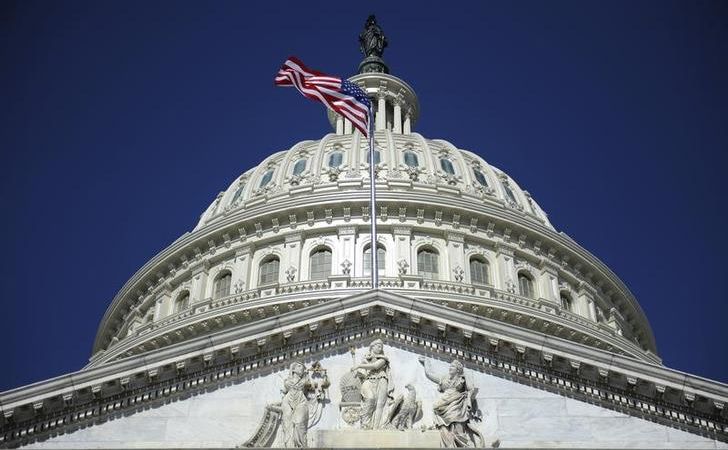Joe Calianno is a Tax Partner in the National Tax Office and serves as BDO’s International Technical Tax Practice Leader. He also is a former Special Counsel to the Deputy Associate Chief Counsel (International) in the office of Chief Counsel for the Internal Revenue Service (IRS). Additionally, Mr. Calianno is a member of the AICPA’s Tax Executive Committee, and previously served as the chair of the AICPA’s International Tax Technical Resource Panel, and as chair of the ABA’s Foreign Activities of U.S. Taxpayer’s Committee.
Mr. Calianno answered the following questions for BEPS Global Currents on October 2, 2018 regarding the global intangible low-taxed income (GILTI) Proposed Regs released by Treasury on September 13, 2018 (the “Proposed GILTI Regs”):
Q: Are you satisfied with the guidance issued in the Proposed GILTI Regs?
A: As part of the U.S. Tax Cuts and Jobs Act (“TCJA”), Section 951A was enacted into law and that provision generally requires U.S. shareholders of controlled foreign corporations (“CFCs”) to include their pro rata share of GILTI in their gross income. The statutory scheme for determining GILTI is quite complex and, as a result, taxpayers and practitioners needed guidance from Treasury in applying Section 951A.
This new provision has a significant impact on U.S. shareholders of CFCs. Companies are already assessing the impact of this new provision from a financial statement reporting perspective.
Given the broad reach of Section 951A, the Proposed GILTI Regs provide much needed guidance for practitioners and taxpayers on the computational and operational aspects of GILTI. Some of the areas addressed in the Proposed GILTI Regs include rules relating to computation of tested income and loss and qualified business asset investment (“QBAI”), the application of anti-abuse provisions under GILTI, the treatment of the GILTI inclusion amount and adjustments to E&P and basis, and the application of Section 951A in the context of consolidated groups and domestic partnerships that own CFCs. Certain proposed rules, such as the rules contained in Prop. Reg. 1.951A-6(e) relating to basis adjustments for the use of tested losses in certain contexts, were somewhat unexpected.
Although the Proposed GILTI Regs provide significant guidance in the GILTI area, additional guidance is still needed. For instance, practitioners and taxpayers are awaiting Treasury guidance on the interaction of GILTI and the foreign tax credit (FTC) rules, as well as guidance on the Section 250 deduction for GILTI. We likely will see that guidance in the near future.
Q: What specific GILTI guidance would practitioners and taxpayers like to be released next?
A: One high priority area that practitioners and taxpayers are seeking guidance from Treasury is how (and to what degree) the expense allocation rules (especially interest expense) will apply to GILTI for FTC purposes. To the extent that expenses are allocated to foreign source income and GILTI, there generally will be a reduction of the FTC limitation and a potential increase to U.S. tax liability.
It is worth noting that there already are several restrictions relating to GILTI as it relates to claiming FTCs. Taxpayers will not be able to carry back or forward any excess credits relating to GILTI, and the amount of FTCs that can be claimed under the statute is scaled back (i.e., a FTC is generally allowed for only 80 percent of the foreign taxes deemed paid).
Thus, although FTCs may be claimed by certain taxpayers relating to their GILTI inclusions, there are several limitations that must be considered to determine the ultimate benefit of such FTCs.
The preamble to the Proposed GILTI Regs also indicates that additional guidance with respect to GILTI will likely address issues relating to Sections 163(j) (interest expense limitation), 245A (the 100% DRD), and 267A (certain anti-hybrid rules). I guess we will need to stay tuned.
Q: What do you think of Treasury’s comments regarding the Section 78 gross up, and assigning it to the GILTI FTC basket?
A: Whether the Section 78 gross up should be included in the GILTI basket has been a topic of discussion among practitioners and corporations. Unfortunately, when GILTI was added by the TCJA, Congress failed to specifically provide that the Section 78 gross up is in the GILTI basket (although the Senate version of the legislation would have done so). Thus, many practitioners and corporations are looking to Treasury to specifically address this issue.
In the preamble to the Proposed GILTI Regs, Treasury states that it anticipates that future proposed GILTI regulations relating to FTCs will provide rules for assigning the Section 78 gross up attributable to foreign taxes deemed paid under Section 960(d) to the separate category described in Section 904(d)(1)(A) (i.e., GILTI). Treasury officials have made similar informal comments relating to this issue at various public venues. Thus, the statement in the preamble of the Proposed GILTI Regs on its planned treatment of the Section 78 gross up is not surprising.
Further, this approach seems to make sense from a policy perspective, especially given that the underlying income giving rise to the Section 78 gross up is GILTI income. Having the Section 78 gross up in an FTC basket other than the GILTI basket (e.g., the general limitation basket) would have the effect of reducing the foreign source income in the GILTI basket and correspondingly, the FTC limitation.
I believe taxpayers were generally hoping that Treasury would include the Section 78 gross up in the GILTI basket, and it appears that is what Treasury intends to do in future guidance.
Q: What do you think of the anti-abuse rules covered in the Proposed GILTI Regs?
A: Treasury took a very expansive approach in drafting broad anti-abuse rules in the Proposed GILTI Regs.
As a general matter, Section 951A(d)(4) provides Treasury the authority to issue regulations relating to QBAI “to prevent the avoidance of” Section 951A(d) relating to QBAI, “including regulations or other guidance which provide for the treatment of property if “(A) such property is transferred, or held, temporarily, or (B) the avoidance of the purposes of this paragraph is a factor in the transfer or holding of such property.”
Given this provision, as well as some language in the TCJA Conference Report to Section 951A relating to certain transactions, it was expected that Treasury would issue regulations incorporating some type of anti-abuse rules.
One of the proposed rules, Prop. Reg. 1.951A-3(h)(1), incorporates an anti-abuse rule. That rule provides that specified tangible property of a tested income CFC is disregarded for purposes of determining the tested income CFC’s average aggregate basis in specified tangible property, if the tested income CFC acquires the property with a principal purpose of reducing the GILTI inclusion amount of a U.S. shareholder and holds the property temporarily, but over at least one quarter end. However, Treasury includes a very broad rule for applying the above test in the Proposed GILTI Regs, stating that property held for less than a twelve-month period that includes at least one quarter end during the taxable year of a tested income CFC is treated as temporarily held and acquired with a principal purpose of reducing the GILTI inclusion amount of a U.S. shareholder.
Additionally, Treasury highlights in the preamble to the Proposed GILTI Regs that it is aware that taxpayers are engaging in certain transactions like the ones described in the TCJA Conference Report involving taxable transfers of property from one CFC to another CFC before the first taxable year of the transferor CFC to which Section 951A applies. The result is to provide the transferee CFC with a stepped-up basis in the transferred property that, for example, may increase a U.S. shareholder’s amount of QBAI with respect to the CFC for periods when it is subject to Section 951A. Treasury notes in the preamble to the Proposed GILTI Regs that the stepped-up basis may also reduce the transferee CFC’s tested income or increase its tested loss during periods when it is subject to Section 951A.
Based on this background, Treasury determined that it would be inappropriate for a taxpayer to reduce its GILTI inclusion amount for any taxable year by reason of a stepped-up basis in CFC assets attributable to transactions between related CFCs during the period after December 31, 2017, but before the effective date of Section 951A.
As a result, Treasury included in the Proposed GILTI Regs (Prop. Reg. 1.951A-3(h)(2)) a rule that disallows the benefit of a stepped-up basis in specified tangible property transferred between related CFCs during the period before the transferor CFC’s first inclusion year for purposes of calculating the transferee CFC’s QBAI.
It is worth noting that the Prop. Reg. 1.951A-3(h)(2) rules are also cross-referenced in Prop. Reg. 1.951A-2(c)(5) to disallow any loss or deduction related to such stepped up-basis in any depreciable property for purposes of calculating tested income or tested loss. However, it is very noteworthy that Prop. Reg. 1.951A-2(c)(5) also applies such rules to amortizable property, and thus to transactions involving intangible property (by definition such property would not be QBAI). The Proposed GILTI Regs include an example in Prop. Reg. 1.951A-2(c)(5) illustrating its application of the anti-abuse rule in the context of intangible property. Including intangible property in this context indicates that Treasury believed it had very broad authority to issue anti-abuse regulations.
In connection with the Proposed GILTI Regs, Treasury also issued proposed anti-abuse rules under Section 951(Prop. Reg. 1.951-1(e)) targeting certain transactions and structures that Treasury views as attempts by taxpayers to improperly allocate Subpart F (as well as GILTI) income. For instance, Prop. Reg. 1.951-1(e)(6) provides that any transaction or arrangement that is part of a plan a principal purpose of which is the avoidance of Federal income taxation, including, but not limited to, a transaction or arrangement to reduce a U.S. shareholder’s pro rata share of the subpart F income of a CFC, which transaction or arrangement would avoid Federal income taxation without regard to this provision, is disregarded in determining such U.S. shareholder’s pro rata share of the subpart F income of the corporation. It is worth noting that Prop. Reg. 1.951-1(e)(6) also applies for purposes of the pro rata share rules described in Prop. Reg. 1.951A-1(d) that reference Prop. Reg. 1.951-1(e), including the rules in Prop. Reg. 1.951A-1(d)(3) that determine the pro rata share of QBAI based on the pro rata share of tested income.
Given the broad wording of this anti-abuse rule, it is likely to create a great deal of uncertainty as to what transactions or arrangements may be within the ambit of the rule.
These comments represent the views of the author only, and do not necessarily represent the views or professional advice of BDO USA, LLP.
The information contained herein is of a general nature and based on authorities that are subject to change. Applicability of the information to specific situations should be determined through consultation with your tax adviser.
BDO USA, LLP, a Delaware limited liability partnership, is the U.S. member of BDO International Limited, a UK company limited by guarantee, and forms part of the international BDO network of independent member firms.
Click here for more information on our BEPS research and technology solutions to address your immediate and ongoing needs.







